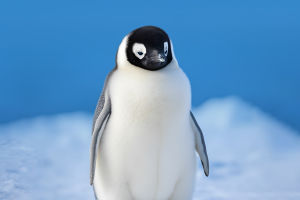The Arctic fox, a mammal belonging to the genus Vulpes in the order Carnivora, is a fascinating creature perfectly adapted to its harsh environment.
With a narrow face, sharp snout, short and rounded auricles, short and thick ears, and short legs, the Arctic fox's small, round shape minimizes body heat loss, essential for survival in the frigid Arctic climate.
To further combat the cold, the Arctic fox boasts multiple layers of thick fur. This fur consists of a down layer similar to that of birds, providing insulation like "autumn clothes and autumn trousers," and an outer protective layer akin to a "windproof coat."
The fur covers the whole body, including the soles and pads of the feet, making the Arctic fox the only canid with furry foot pads. Even the Alaskan dog, also from the Arctic Circle, lacks this feature. The Arctic fox is truly "fully armed from head to toe."
Commonly perceived as "whiter than snow," the Arctic fox indeed has a pure white coat in winter, helping it blend perfectly into its snowy surroundings. The winter fur, primarily white, features only the hairless nose tip and tail tip in black.
These white hairs lack pigments and are hollow, providing excellent insulation from the cold air. In spring and summer, the fox undergoes a molting period, gradually shedding its white fur for a blue-gray coat.
During summer, its body hair is gray-black with a lighter belly. As winter returns, it once again dons its "white fur."
In addition to the seasonal molting Arctic foxes, some remain blue-gray year-round and are known as blue foxes. This adaptation suits their coastal habitat along the Arctic Ocean, where temperatures are relatively higher than in the white ice areas.
The blue-gray fur provides camouflage against the blue seawater. However, there is no strict racial boundary between the color-changing Arctic foxes and blue foxes. They often live together, and their offspring can inherit either or both color patterns.
The Arctic fox is distributed across the coastal areas of the Arctic Ocean, tundra regions on some islands, boreal forests, permafrost, and ice fields, enduring temperatures as low as minus 50°C.
They prefer to dig burrows on sunny hillsides for shelter, remaining active year-round without hibernating. These burrows are repaired and expanded annually, ensuring long-term habitation. During blizzards, Arctic foxes can stay in their nests for several days without emerging.
In the summer, when food is abundant, Arctic foxes store some of it in their nests for the harsh winter months. When their stored food runs out in winter, they often follow polar bears, scavenging the leftovers from the bears' meals.
It's common to see 2 to 3 white foxes trailing behind polar bears. However, when polar bears are extremely hungry, they may attack the Arctic foxes.
The population of Arctic foxes fluctuates with the number of lemmings, a primary food source. Typically, when lemming numbers drop significantly, Arctic fox populations peak.
This is because, in lean years, the foxes are forced to venture farther for food, spreading a disease known as "mad dance disease." This disease, caused by a virus affecting the nervous system, makes the infected Arctic foxes extremely agitated and excitable.
They lose control, running around erratically and even daring to attack passing dogs and wolves. Most infected Arctic foxes die in their first winter. Local hunters often collect the fur from these deceased foxes.
Arctic foxes are remarkable not only for their survival strategies but also for their ability to thrive in one of the harshest environments on Earth.
Their unique adaptations, such as their fur-covered foot pads and seasonal color changes, illustrate the incredible ways in which life can evolve to meet the challenges of extreme habitats.


